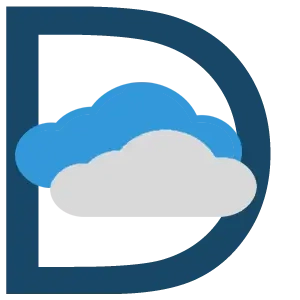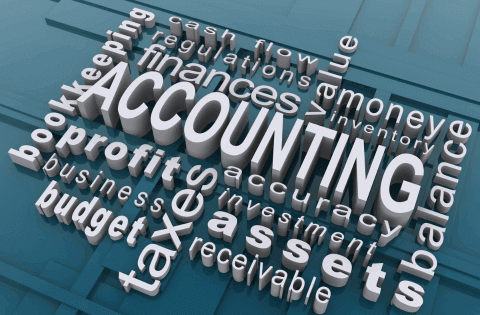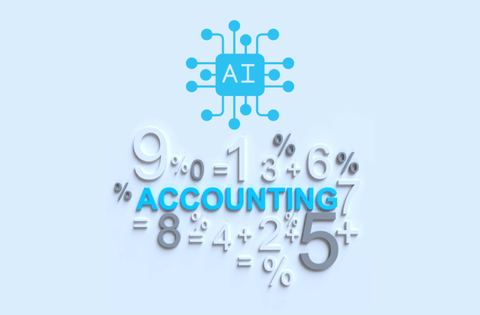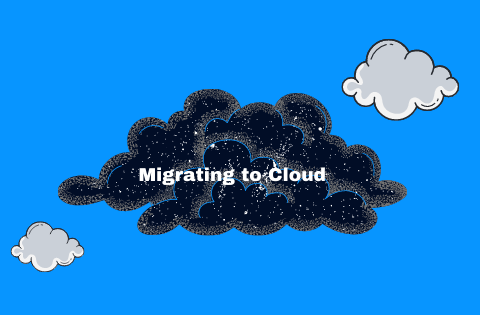What is an Accounting System? Accounting Components, Types and Examples
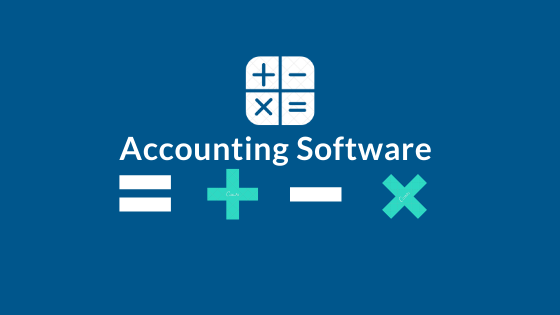
An accounting system is a computer program that assists accountants, CAs, and Professionals to keep records of the books of accounts and other financial transactions.
Every business, company, and enterprise needs software systems to manage their compliance and taxation and automate receipts and payments.
And that is where the integrated software for accounting comes in.
Small Business owners hardly work on any accounting system except viewing MIS reports.
Because accounts and audits are mostly of concern to finance departments that accountants and CAs look after.
However, today’s accounting system and the generation of software have come a long way driven by technologies such as AI and available online.
So it is easy for business owners to get their accounting data and access KPIs on mobile devices.
Hence, online accounting software and systems are much more powerful tools for businesses today.
Because it allows business owners to get timely information on the go and accountants and CA’s can serve multiple companies from a single location.
We know of an accounting system in the business world as business accounting software.
Because it allows a business to track, record, analyze, and interpret financial transactions and banking information.
And these software system allows business owners to take intelligent business decisions and accurate financial planning.
Also, it is not only about financial analysis, most accounting software also provides access to inventory management.
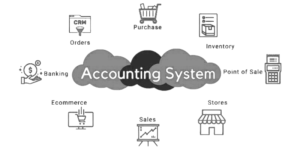
What are the components of an accounting system?
Commonly known as accounting software, an accounting system accepts inputs, processes the data, and provides output results in the form of reports.
Therefore any accounting software system comprises 3 main components i.e. masters, transactions, and reports.
a) Masters – Ledgers in Accounting System
A master is a form that stores all variables such as ledger accounts or all inventory such as products.
Without a ledger account, you cannot debit or credit a financial transaction. Therefore you need an entity and that entity is called a ledger that forms the basis of accounting.
So masters are forms to create all ledger accounts.
For Example, if you want to define your bank account.
You have to define the name of your company’s bank in the software under a master form.
So the name of the bank identifies your bank account.
And then identify your bank account under a sub-category that is related to an accounting group bank.
This is how all ledgers form.
If you want to visualize all your ledger accounts you can check the Chart of Account which is a complete listing of all ledgers in your accounting software.
All ledger accounts fall under a subcategory or an accounting group.
And you can create these groups under the accounting group master form.
Accounting groups comprise Debtors, Creditors, Expenses, Income, Stock, Bank, Cash, Taxes, Loans and Advances, and so on.
And these accounting groups are essential to predefine groups that exist by default in any accounting software.
But accountants and business owners can create their own accounting groups as needed.
So whenever you define a master your account ledger shall fall under a group that is either predefined or custom-defined.
b) Transactions – Vouchers in Accounting System
When you finish defining all your ledgers you can prepare easily all your accounting transactions within your software.
A transaction in accounting software involves two entities that fulfill a complete transaction.
In any accounting transaction entry, two ledger entities get affected one becomes the debit and the other becomes the credit.
However, most accounting systems make accounting transactions so simple that manually you don’t need to select a debit or credit side.
So any business owner can make an accounting entry without even knowing what is going on on the credit side or the debit side.
Whereas other accounting systems provide a transaction entry form where you need to manually select the debit side or the credit side to affect a ledger and vice versa.
Sales, purchases, cash receipts bank receipts, cash payments, bank payments, journals, cash withdrawals, and cash deposits are all examples of known transactions.
One simple transaction is a Sales Voucher, when you sell an item, sales identify the Credit (Cr.) side, and your customers reflect as Debit (Dr.)
Similarly, when you make a purchase, your Purchase Voucher identifies purchases as Debit(Dr.) and your vendor identifies as Credit (Cr.) on the other side of your software.
c) MIS Reports – Financial, Inventory, Payroll Reports
In any accounting software or system, Reports are a final component that shows the real timeline and actual performance of your business.
Reports are processed through SQL queries internally
And that is how businesses get immediate access to the reports on business and financial status.
Like any other form of Report, basic accounting and inventory reports are already there in any accounting system for business owners to take important decisions.
The reports solve different purposes of businesses and organizations from business owners to users of accounting software across multiple branches and locations.
Not all reports are necessary for all users of an organization.
Hence good accounting software provides control of privacy and the flow of information.
Where Admin can control and restrict access to masters, transactions, and reports that are not mandatory for a particular department or a user.
Reports such as financial statements, tax returns, final account reports, outstanding, cost centers, GST, and audit reports are all examples of accounting group reports.
Sales Registers, Pending Sales Reports, Sales Analysis Reports, and Sales MIS Reports are all examples of Sales Group Reports.
Purchase Registers, Pending Purchase Reports, Purchase Analysis Reports, and Purchase MIS Reports are all examples of Purchase Group Reports.
Inventory Registers, Stock Reports, Stock Monitoring Reports, Pending Inventory Reports, WIP Reports, Service Reports, and MIS Inventory Reports are all examples of Inventory Group Reports.
However, apart from these reports, the form of reports can be of several types in accounting software, and they are mostly available to businesses as:
- Dashboards
- KPI’s
- Predefined Reports
- Custom Reports
- MIS Reports
What are the different types of accounting systems?
Accounting Software can be of several types depending on the market segments.
The market comprises of low-end market, mid-market, and high-end market, therefore solutions are available as per market segments.
Low-end market solutions are easy to use and implement, but mid and high-end market solutions need implementers for installation, customization, and support services.
However, these days internet technologies have given rise to SaaS-based accounting software and systems.
These accounting systems host their database with a third party and therefore customers do not require any installation.
However, you may require consultants for configuring large SaaS systems (Software as a Service) as it includes high-end configurations.
When compared to the cost of solutions based on different market segments prices also vary largely for software available for commercial purposes.
High-end accounting applications are often sold via channel partners to those who have the required training on the product.
And they are usually resellers, developers, or consultants with years of experience in this field.
While other software vendors sell, consult with, and support clients directly.
So let us take on the type of accounting software that is prevalent today.
a) Commercial Small Business Accounting System
Commercial software is developed by various software firms that depend on the type of business and industry.
This software is available in the form of a package and is available for both trading and manufacturing concerns.
And also across specific industry verticals.
Commercial software is also available as on-premises software or software as a service.
And both of these variants differ largely in terms of service and support.
Most On-Premises software requires a one-time fee to purchase the software licensed by vendors
Whereas SaaS-based accounting requires a per-user fee each month.
Commercial accounting software packages are predefined business software designed for specific verticals or niches or specific market segments.
Hence it is not so difficult to configure the software, as it contains all the settings and configurations needed to configure accounting software.
Most of this software perfectly fits the low-end market and mid-market segments to some extent where customers can directly purchase the software from the vendor.
And software vendors directly assist their customers in configuring the product within a few hours or a day.
b) ERP System for Small Businesses
Enterprise Resource Planning software on the other hand is a type of software that aims for the mid to large market.
While On-Premises ERP software is costly and can be painful to implement.
Because it requires engineers, consultants, or implementation partners to install and configure processes.
For Example, SAP B1, Oracle, Microsoft Dynamics, Sage, Infor, Epicor, etc. are ERP Software that requires consulting partners to install, implement, and train employees to run the system.
Most mid to large companies use Cloud ERP Software for Finance and Accounting to handle their finances, while others use cloud accounting software.
Therefore accounting software packages for low-end markets and mid-market may vary largely in the way we configure the software.
Mid-market software has more configurations and reports and functionality compared to low-end market software.
And these ERP systems separate largely by the availability of features, brand, and cost.
ERP software is usually installed by large and complex organizations to bring together all the departments and resources of an organization.
c) Custom Small Business Accounting System
Custom software is specialized software that is developed through a contract with specific vendors.
Not all organizations would like to go for custom software development unless an organization’s requirements are too specific.
The reason is custom software can be too expensive at times that may be out of budget for a small business or for a low-end market.
Generally, the use of commercial software is much better than developing custom software if you meet all the requirements.
You can also get your commercial software customized through your software vendors.
Also, for any specific requirement that is within its context vendors bring out these features on new releases.
So you can get the features for free without spending any dollars.
But it is painful to wait because vendors are not sure when shall they roll out your required feature.
Otherwise, you can go for custom development.
Custom development software is prone to a lot of bugs and can consume enough time and money to get it developed.
The most commonly used business accounting software systems
A lot of people ask about what is the most commonly used small business accounting software.
Well, geographically there can be some specific accounting software that is largely in use in a particular country.
But globally it may vary.
For Example, QuickBooks is very popular in the United States, Xero is very popular in New Zealand and Australia, and ZohoBooks in India
Therefore accounting software that is popular in a country like Australia or UAE may not be popular in a country like the United States or India.
Because people generally take an interest in using an accounting system that adheres to their own country’s tax laws, rules, and regulations.
However, when we talk about the most commonly used accounting software it also means, how popular is accounting software in terms of its customer base and users.
So here I am referring to the 3 most commonly used accounting software globally and those are ZohoBooks, QuickBooks, and Xero.
These accounting systems are not only popular in their own country but are popular globally across countries and continents.
And are also the most preferred small business accounting systems for enterprises at a global level.
a) ZohoBooks

ZohoBooks is a product of Zoho Corporation, a software development company with headquarters in Chennai, India.
As per the official website, the Zoho product is trusted by more than 50 million users globally and runs with nearly 7,000 employees across the globe.
Zoho products come bundled with 40+ integrated applications.
Ranging from Finance, Human resources, Business Intelligence, IT and Help Desk, Sales and Marketing, and Email Collaboration to Custom Solutions.
Therefore ZohoBooks is only a part of the Zoho Bundle Apps that customers can use individually as per requirement.
And business can integrate with other apps as their business grows.
Hence, it is an all-in-one accounting and business solution for small businesses
And you don’t have to purchase any other application separately.
b) QuickBooks

According to Wikipedia, QuickBooks is an accounting software package developed and marketed by Intuit.
QuickBooks products are geared mainly toward small and medium-sized businesses and offer on-premises as well as cloud-based versions.
And as such, the software claims up to 85 percent of the small business accounting software market.
QuickBooks Online (QBO), is one of the leading business, and financial management software for small businesses
And is now available also in India and its subcontinent.
Currently, QuickBooks Online has 2.2 million users worldwide and is available in 192 countries.
The cloud version is a distinct product from the desktop version of QuickBooks.
And it has many features that work differently than they do in QuickBooks desktop versions.
QuickBooks Online also offers integration with other third-party software and financial services, such as banks, payroll companies, and expense management software.
c) Xero

As per Xero’s official website, the company is founded in 2006 in New Zealand and today it is one of the fastest-growing software as-service companies globally.
Xero is a cloud-based accounting software platform for small and medium-sized businesses.
And its products are used in over 180 countries.
The company employs a team of 3000+ people and has a user base of 2 million-plus users and subscribers of Xero Accounting Software.
Xero accounting software features include automatic bank feeds, invoicing, accounts payable, and receivables.
It also features expenses and claims, fixed asset depreciation, purchase orders, bank reconciliations, and standard business and management reporting.
Xero also claims to have more than 200 secure connections with banks and financial service partners around the world.
And integrations with over 800 third-party apps, and build your own stack of integrated apps to help run your business smoother.
In Conclusion:
There are many more accounting systems and software that provide excellent support and services.
But it is beyond the scope of this article to list all of them.
However, Zoho, QuickBooks, and Xero are top accounting software that is rapidly increasing their user base.
And have added more customers globally compared to other available accounting solutions online.
These companies draw a lot of internet traffic from across the world and that is where the transparency is.
Zoho is one of the companies that has already added a large user base.
And Xero is growing exponentially at a rapid pace across the world with its quality SaaS services.
